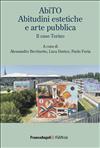In this article, the Author maintains that Fichte employs the concept of the image (Bild) in order to formulate transcendental logic as a self-grounding, self-referential and recursive thinking device. Fichte considers the image as the "absolute concept", the "original and primeval" concept, because it is the main generative element, the basis and the "engine", as it were, of transcendental logic. However, at least at first glance, the concept of the image seems a little inadequate for developing a transcendental logic. In the first place, one may reasonably argue that traditionally it has to do with aesthetics, not logic. It seems rather odd to place it at the genetic foundational core of logic. Moreover, also the reference to Kant’s doctrine of schematism, which should be mentioned as one of the historical antecedents of Fichte’s Bildlehre, does not suffice to explain Fichte’s particular understanding of the image, which differs from the widespread concept of the image as regarding factual representations. On the contrary, Fichte’s Bildbegriff is about the idea of a circular genetic-performative mutual dependence of thinking and thought. Hence, the Author tries to answer three intertwined questions: How can the image be conceived of as a logical concept and not an aesthetic one? How can one justify the claim that the image is the generative concept of logic? How can the concept of the image meet the requirements of apriority, self-reference and self-foundation?

